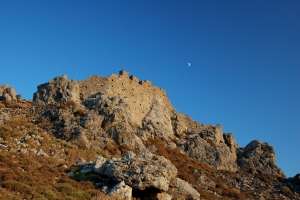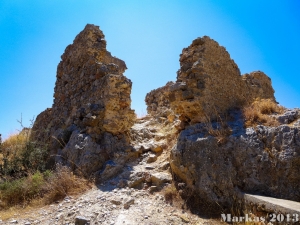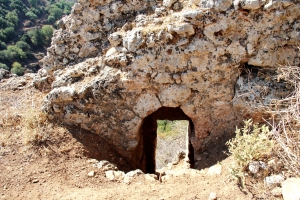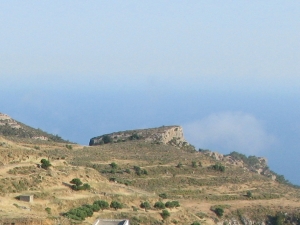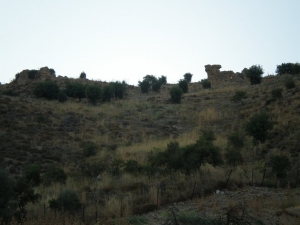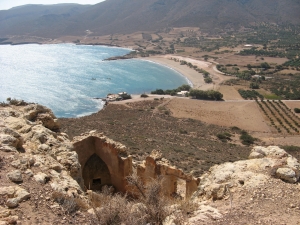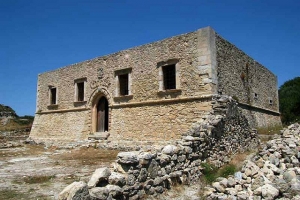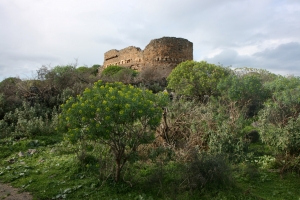Next to the village of Krya, 25km away from the town of Sitia, there is a hill with the church of St. George and the ruins of a Venetian castle, called Monte Forte or Apano Castelli (Upper Forth).
The fort of Sfakia (Castel di Sfacia or Sfachia) was built on Kastelli hill, on the eastern edge of Sfakia (Chora Sfakion) town and was the last fort built by the Venetians in Crete. It was built during the 15th-16th century on the site of a previous Byzantine fort. Information about the castle is very poor, but this was mentioned for the first time in documents of 1526.
The fortress of Agios Nikolaos of Kyriakosellia is located in the homonym settlement of Kyriakosellia, belonging to the province of Apokoronas. It was a Byzantine fortress built by the feudal lord of the region to secure his privileges.
The village of Agios Stefanos (or Gra) in Sitia province, located between Pefki and Stavrohori villages, is built on a high hill. Atop the hill there is a rock which the locals call Kastellos or Fortezza, atop of which there are the ruins of a Venetian fortress.
The Fort Bonifacio or Apano Castelli is located west of the current Tsifout Kastelli village, 44km south of Heraklion, on a hill now called Apano Kasteli or Psilo Aloni. The fort is reported since 1212 and was built by the Genoese pirate Henry Pescatore.
East of Paleokastro (Sitia Province) rises the steep hill Kastri, which separates the beaches of Kouremenos and Chiona. The hill was called Paleo Castro (Old Fort) by the Venetians, after which the current village is named.
Etia is an deserted medieval village, located near Lithines of Sitia province, which in its heyday was the largest village of the area with more than 500 residents. It is worth strolling among the Venetian buildings of the village. Here in the late 15th century, the Venetian master Pietro Dei Mezzo, which was the feudal lord of the surrounding area, built the mansion De Mezzo, known as Villa De Mezzo or Seraglio.
The Koules in Nio Chorio is located in the middle of Apokoronas Province, about 25km southeast of Chania and close to the village of Nio Chorio. On the hill of the fort leads a road starting from Nio Chorio. The fort is not well preserved, with only a few walls standing and commemorating its glorious past.











